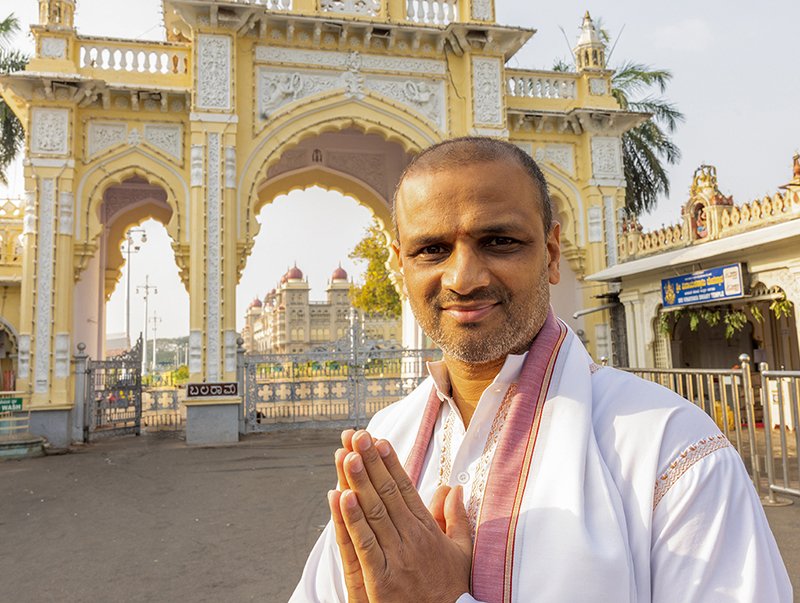You may have seen Buddha statues in yoga studios, meditation centers—even in clothing boutiques, or bohemian bookstores. Most people understand that the statue is related to Buddhism, but it’s often confusing for non-Buddhists to understand how Zen Buddhism is different from Tibetan Buddhism, and how they both seem distinct from other forms of Buddhism. The evolution occurred over thousands of years, as do most spiritual traditions, but after the death of the Buddha the way in which his teachings were proliferated was incredibly unique.
Whenever Buddhist teachers encountered a new culture they would do something very interesting: Instead of subjugating the indigenous belief system they would incorporate the culture of the people, thereby amplifying the vast specificity of Buddhism in each unique land. As a result, Buddhism as it exists in Japan looks very different than it does in Thailand or the colorful representation of Buddhism you find in Tibet. As Buddhism came to Tibet it incorporated the local deities, found support for the teacher-student relationship, and developed its own unique practices and traditions.
Tibetan Buddhism is unique in that it has become one of the most prominent Buddhist strands practiced in the West. Popularized by famous visionaries from the Dalai Lama to Jon Kabbat Zinn, and further divulged into mainstream culture through celebrities like Richard Gere, very often when we talk about Buddhism in the West we’re talking about Tibetan Buddhism. Even yoga studios in America widely proliferate elements of the Tibetan Buddhist practice, such as mindfulness meditation. To better understand why and how Tibetan Buddhism has become so important to spiritual practitioners worldwide, it is helpful to take a closer look at the development and history of the practice.
Early History
The story begins in 641 CE when King Songtsen Gampo unified Tibet and took two Buddhist wives, Princess Bhrikuti of Nepal and Princess Wen Cheng of China. Years later, the monk Shantarakshita and the yogi Padmasambhava were asked by King Trisong Detsen to travel from India to Tibet. At the time there were animistic and shamanistic traditions that were considered by the Buddhists as a separate religion called Bon.
In addition to convincing people to move away from the Bon tradition, the king was having trouble building a monastery due to spiritual obstacles. Padmasambhava was invited to subdue these obstacles, sometimes referred to as local demons, but instead converted them to serve his work in propagating the teachings. In doing so he set a precedent within the tantric Tibetan Buddhist tradition: Even those factors in our life that are seemingly negative can be fuel for our spiritual journey—they do not need to be subjugated or destroyed but incorporated into our path.
Practices and Beliefs
While Buddhism is classified as a religious tradition, the Buddha is seen not as a god or supernatural being but as a person who was able to look beyond his own confusion to attain enlightenment. When we talk about attaining enlightenment it’s not that he transcended our world and went somewhere else; he discovered that underneath his own ignorance there was peace. He realized that we as a species are not basically messed up. We’re basically wakeful. We’re basically good.
The four main schools of Tibetan Buddhism, outlined below, share an emphasis on the three turnings of the wheel of dharma. Dharma refers to the teachings of the Buddha that resulted from his enlightenment, and the three turnings refer to the phases of Buddhist traditions that developed through the years. The first turning is sometimes called the “Hinayana,” which can be translated as “narrow vehicle” because of its emphasis on taming one’s own mind before bringing one’s practice off the cushion. Often referred to as Theravada school, this is the form of Buddhism that took root in places like Burma and Thailand. Within Tibetan Buddhism developed another tradition called “Mahayana,” or the “greater vehicle,” which is a pathway to study compassion practices in order to benefit all beings. Zen, for example, as practiced in Korea or Japan, is a Mahayana school.
Unique to Tibet is the third turning of the wheel of dharma called “Vajrayana,” or “indestructible vehicle.” Having studied the Hinayana and Mahayana, a practitioner takes on a specific teacher, referred to as a guru, who empowers them within the Vajrayana. These practices are actually very secret, only offered to those who are properly initiated by an authorized teacher.
The Vajrayana practices, also known as tantric teachings, begin with “ngondro,” which can be translated as “before you go.” They are the preliminary practices of doing prostrations, mantra recitation, mandala formation, and visualization of the teacher. They are called ngondro because the practitioner does them before they go on to a “sadhana,” a longer practice that often includes a visualization and recitation of a mantra, meant to connect the practitioner with her innate wakefulness. The tantric path is often referred to as expedient because, as many great teachers of this lineage demonstrated, we take the challenging aspects of our life and meditate on them, making them a genuine part of our spiritual journey toward enlightenment. Looking to the example of these teachers we can find inspiration for our own life.
Related: A Mantra Meditation to Cultivate Patience
The Four Main Schools of Tibetan Buddhism
Nyingma
While the four main schools of Tibetan Buddhism trace their roots back to the Buddha himself, each school has an origin story. The disciples of Padmasambhava formed what is now known as the “Nyingma” lineage. Nyingma can be translated as “ancient” and refers to the fact that they were, essentially, the first real school of Buddhism that wasn’t Indian in nature—it was Tibetan. It’s worth noting that in a heavily patriarchal society Padmasambhava’s primary disciple was a woman known as Yeshe Tsogyal. He also had 25 other chief disciples who established this lineage in Tibet. It continues today as a heavily yogi-like tradition, existing as a somewhat loose structure of teachers and students, compared to the monastic system that came later. I’m proud to say my own lineage descends from this and the next main school.
Kagyu
The Kagyu school of Tibetan Buddhism traces its roots back to the Indian yogi Tilopa (988-1069 CE) named for his day job pounding sesame seeds (metaphorically grinding out the ego). Like many Kagyu forefathers he had a difficult path to follow in the world. He spent the day with sesame seeds and the evening finding clients for the prostitute Dharima. Like Padmasambhava, we see a story of someone who blends a difficult experience with his path to establish Buddhism in a new way. He was an ardent practitioner and became enlightened, developing a system of meditation known as “mahamudra,” or “the great seal,” and passing these teachings about the nature of mind on to the proud academic Naropa.
Marpa a heavy drinker from Tibet, came to study with Naropa and brought the teachings he received back home with him. Marpa became known as the Great Translator as he had the difficult task of making these teachings accessible in his homeland. One of Tibet’s greatest yogi saints, Milarepa, was Marpa’s principle disciple, who then trained Gampopa, who then trained the first Karmapa who brought these teachings under the monastic umbrella. Centuries later the latest reincarnation of His Holiness the Karmapa (1985-) oversees the Kagyu school from northern India.
Sakya
The Indian master Virupa is often considered a forefather to the Sakya lineage, who passed his teachings on to various Indian masters who passed them on to the Tibetan Drokmi Lotsawa Shakya Yeshe (992-1072 CE) when he traveled to India.
Drokmi Lotsawa passed the lineage on to Khon Konchok Gyalpo who built a monastery in an area with lots of gray earth. The Tibetan word for gray earth is “sakya,” and that is how they got their name. His son, Sakyapa Kunga Nyingpo, became his spiritual successor, which set a precedent for hereditary transmission going forward and is certainly unique in a religious tradition that normally emphasizes finding someone’s reincarnation and empowering them as successor.
Related: 30 Brilliant Insights from Mindfulness Trail Blazers
Geluk
Perhaps the most renowned tradition is the Gelukpas, as the head of this lineage is His Holiness the Dalai Lama. Before there were reincarnated Dalai Lamas though there was Atisha (982-1054 CE), an Indian master who arrived in Tibet at age 60. He reinvigorated the monastic community in Tibet, which was waning at the time. Atisha was the founder of the Kadam School, in which many of the lineage figures mentioned above studied.
In the 14th century a monk named Tsongkhapa established Ganden Monastery, at which point the tradition had a resurgence and became known as the Geluk school. One of Tsongkhapa’s disciples became the first Dalai Lama and these reincarnated teachers have overseen the lineage ever since. As the Dalai Lama, the Karmapa, and other great modern day Tibetan Buddhist masters visit the West we see these traditional schools encounter a new land. Given the history of Buddhism’s transformation as it encountered Tibet, time will tell how Tibetan Buddhism will meet our culture and integrate to become something new and American.








Comments (0)